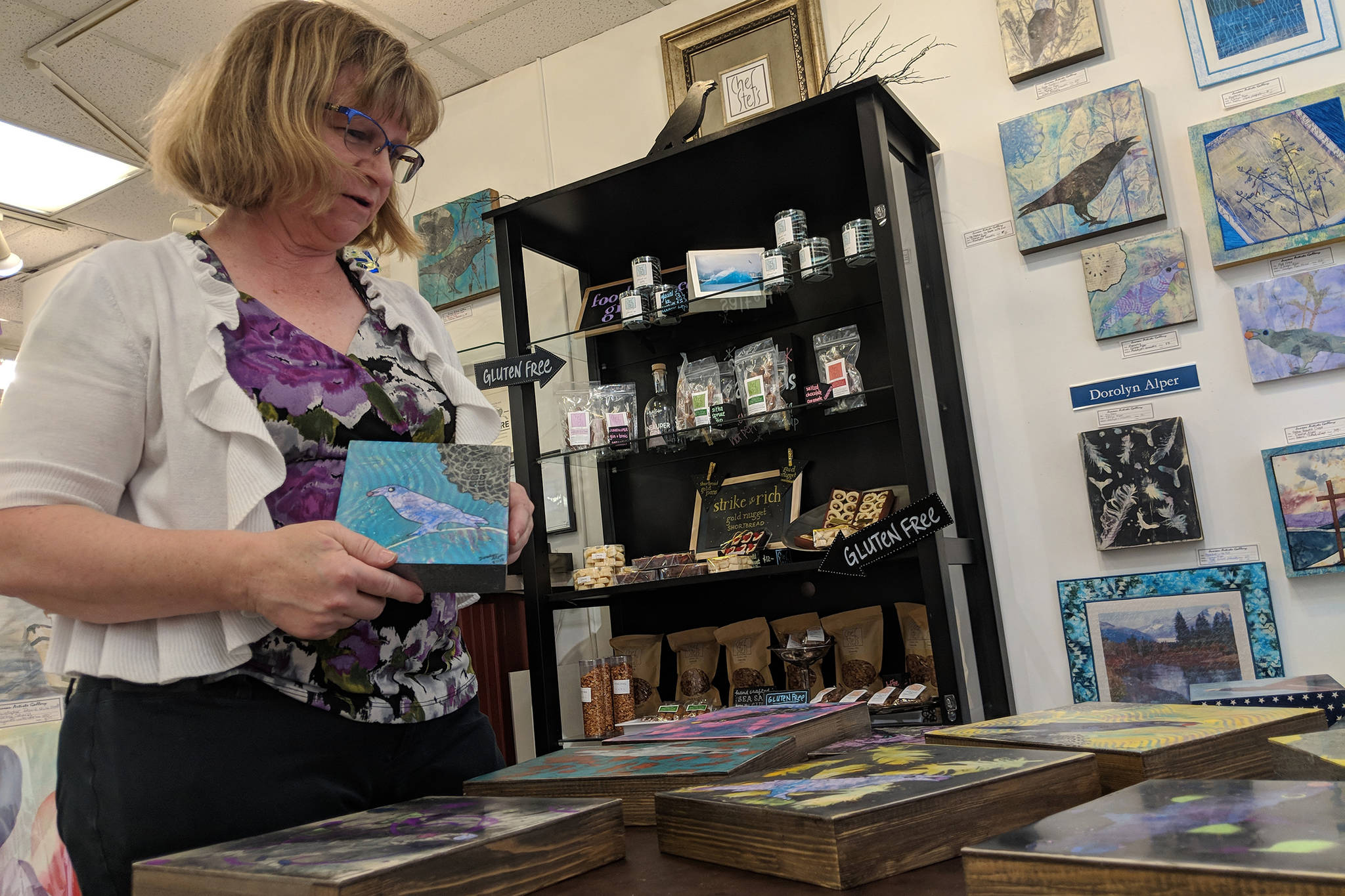As Dorolyn Alper unpacked artwork to hang in the gallery, she paused to work pieces over with a cloth.
After about 30 seconds of tight circles, she’d tilt the shining, square pieces, to catch the light.
“See how much that brought out?” Alper said.
Alper, whose work was featured at Juneau Artists Gallery for First Friday and will be up for the month of September, works in many different mediums, but it was her work with encaustics that required the extra attention.
It’s an artform that makes use of a resin-beeswax-pigment mixture, and Alper said once layers of encaustic are applied the buffing process can go on for months.
“I do lots and lots of different mediums, and this is just one of the things I do,” Alper said. “It’s the one I find most interesting right now.”
Alper’s encaustic work is a rarity for the area.
“My brother in the L.A. area works in encaustics, and that’s the only other person I know who does it,” said Dianne Anderson, artist at the gallery.
Alper will have a number of different pieces at the gallery, including fiber and textile work, but some of the most recent creations were made with encaustic.
“The most recent thing I’ve done is 10 raven pieces,” Alper said. “Ravens have spoke to me a lot because they’re so smart, and they’re so interesting to watch.”
Alper’s ravens differ from their black, real-life counterparts and also draw inspiration from indigenous peoples’ stories.
“My ravens are all different colors,” Alper said. “Almost all of them have a sun in their beak.”
Developing an interest
Alper was already making fiber sculptures and indirect prints while living in Virginia when encaustics found her.
A traveling workshop came to the area, and Alper, who had a keen interest in art, attended.
Her interest in the artform came along with her when she moved to Juneau a year and a half ago.
She’s also traveled to attend other workshops and studied encaustics at Maiwa School of Textiles in British Columbia.
Part of the reason for the wide-ranging travels, Alper said, is that there are not many artists working in encaustics. Although, Alper noted that is changing slightly.
“I think it’s become more popular because the materials are more available,” Alper said.
Alper is able to buy pre-mixed supplies online, and in the past has used a layover in Seattle as an excuse to stock up, too.
“I took the fantastic light rail over and got my supplies,” Alper said.
Online shopping has opened the door to new artists, Alper said, and the pre-mixed materials being sold are easier to use.
“It used to be you had to mix your own encaustic material, which was a lot of trouble,” Alper said.
The encaustics process
Encaustics still takes time.
“Each piece takes a matter of days, and each piece develops over weeks,” Alper said.
That’s because there are many steps to the process, and things such as life or Alper’s day job as a therapist tend to put a delay in the labor.
Alper said her pieces require a background (sometimes sheet music or a dictionary page), a monotype print, adhering the work to a rigid surface, three layers of encaustic material (each layer must be heated with a blowtorch), staining a frame and polishing the whole thing.
Also, between layers of encaustic material, portions of the work need to be taped off because hot wax tends to move in unpredictable ways.
“It’s a very messy medium,” Alper said.
Despite the mess, Alper does the work in her house.
“My home is my art studio,” Alper said. “This is such a beautiful area for art and for nature.”
• Contact CCW reporter Ben Hohenstatt at 523-2243.

